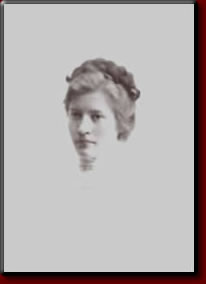Courtesy of the National Security Agency (NSA):
Agnes Meyer Driscoll
1889-1971
Agnes Meyer Driscoll’s work as a navy cryptanalyst who broke a multitude of Japanese naval systems, as well as a developer of early machine systems, marks her as one of the true “originals” in American cryptology. She was born in 1889, and in 1911 she received an A.B. degree from Ohio State University, majoring in mathematics, physics, foreign languages, and music. From her earliest days as a college student, Agnes Meyer pursued technical and scientific studies atypical for a woman of the times. After graduation, she moved to Amarillo, Texas, where she was director of music at a military academy, and, later, chair of the mathematics department at the local high school.
In June 1918, about one year after America entered World War I, Agnes Meyer enlisted in the United States Navy. She was recruited at the highest possible rank of Chief Yeoman and was assigned to the Code and Signal section of the Director of Naval Communications. Except for a two-year hiatus, when she worked for a private firm, Agnes Meyer Driscoll (she married in 1924) would remain a leading cryptanalyst for the U.S. Navy until 1949.
Her efforts were not limited to manual systems; she was involved also in the emerging machine technology of the time, which was being applied both to making and breaking ciphers. In her first days in the Code and Signal section, she co-developed one of the U.S. Navy’s cipher machines, the “CM.” In 1923, Miss Meyer left the navy and joined the fledgling Hebern Electric Code Company as technical advisor. Although Hebern’s company ultimately failed, its work in rotor technology would affect machine cryptography for years to come. She returned to the navy in 1924.
In her thirty-year career, Mrs. Driscoll broke Japanese Navy manual codes — the Red Book Code in the 1920s, and the Blue Book Code in 1930, and in 1940 she made critical inroads into JN-25, the Japanese fleet’s operational code, which the U.S. Navy exploited after the attack on Pearl Harbor for the rest of the Pacific War. In early 1935, Mrs. Driscoll led theattack on the Japanese M-1 cipher machine (also known to the U.S. as the ORANGE machine), used to encrypt the messages of Japanese naval attaches around the world. At the same timeAgnes sponsored the introduction of early machine support for cryptanalysis against Japanese naval code systems.
Early in World War II, Mrs. Driscoll was engaged in the U.S. Navy’s effort against the German naval Enigma machine, although this work was superseded by the U.S.-U.K. cryptologic exchanges in 1942-43.
Mrs. Driscoll was part of the navy contingent that joined the new national cryptologic agencies. first the Armed Forces Security Agency in 1949 and then the National Security Agency in 1957. Mrs. Driscoll died in 1971 and is buried in Arlington National Cemetery.
Michael Robert Patterson was born in Arlington and is the son of a former officer of the US Army. So it was no wonder that sooner or later his interests drew him to American history and especially to American military history. Many of his articles can be found on renowned portals like the New York Times, Washingtonpost or Wikipedia.
Reviewed by: Michael Howard

